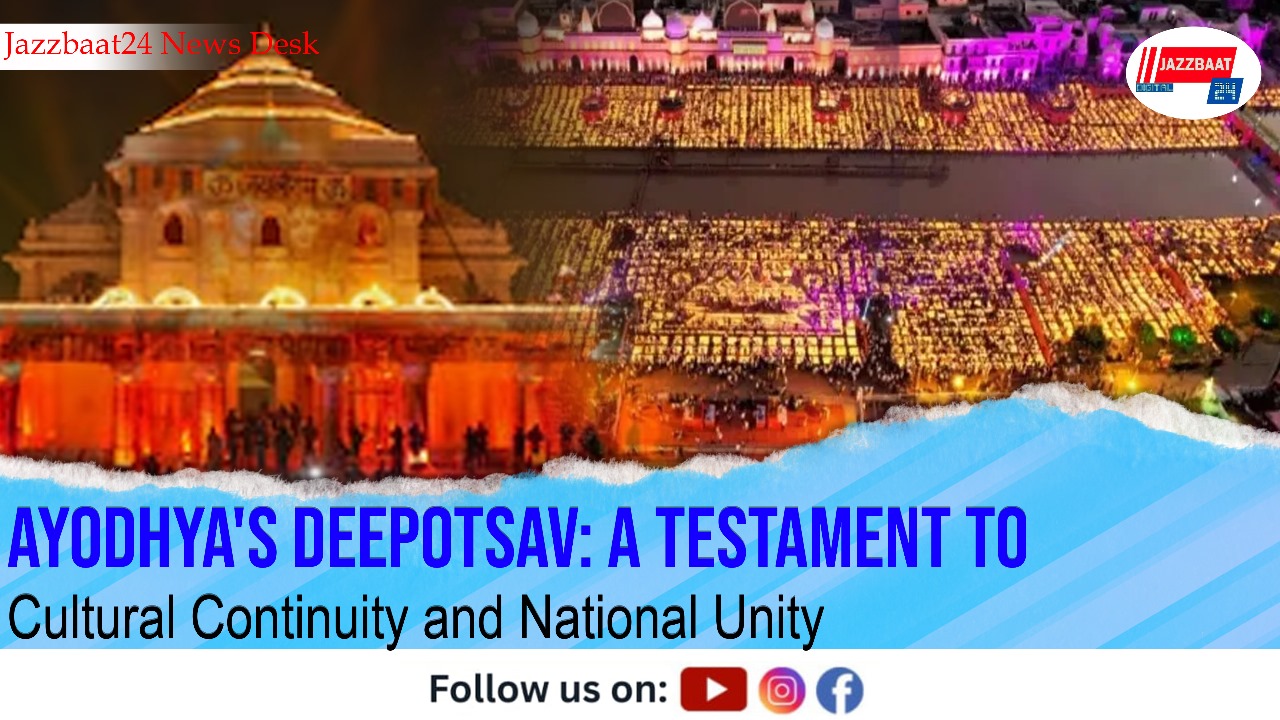
As Ayodhya prepares to illuminate its sacred ghats with over 26 lakh earthen lamps this evening, the ninth edition of Deepotsav stands as more than just a festival of lights it represents the enduring power of cultural traditions to unite, inspire, and project India's civilizational heritage onto the global stage.
The sheer scale of this year's celebration is remarkable. With 26,11,101 diyas spread across 56 ghats along Ram Ki Paudi, Ayodhya is poised to shatter its own previous record, creating what promises to be a breathtaking tableau on the banks of the Saryu River. But beyond the numbers lies a deeper significance that merits reflection.
What distinguishes Deepotsav from mere spectacle is its foundation in genuine community engagement. The involvement of over 10,000 individuals from local administrators and cultural organizations to students from Dr. Ram Manohar Lohia Avadh University demonstrates how cultural celebrations can become exercises in collective purpose. In an era often characterized by social fragmentation, such mass participation in a shared spiritual and cultural endeavor offers valuable lessons in unity and collaboration.
The meticulous organization, including Guinness World Records' structured verification process with QR code tracking and zone-wise supervision, showcases how traditional celebrations can embrace modern management practices without losing their essential character. This synthesis of the ancient and contemporary is quintessentially Indian.
Deepotsav has evolved into a powerful instrument of cultural diplomacy. As images of millions of lamps reflecting off the sacred river reach audiences worldwide, they communicate India's spiritual depth and organizational capability. In an interconnected world where nations compete not just economically but culturally, such displays of heritage serve as reminders of India's unique civilizational identity.
The presence of international record adjudicators and global media attention transforms a local religious festival into a statement about India's ability to honor its past while confidently engaging with the present. This is soft power in action the ability to attract and inspire through culture rather than coercion.
However, as we celebrate Deepotsav's grandeur, we must also ensure that the pursuit of records and recognition doesn't overshadow the festival's spiritual essence. The true value of lighting diyas lies not in breaking records but in the symbolic triumph of light over darkness, knowledge over ignorance, and hope over despair principles that transcend religious boundaries and speak to universal human aspirations.
Moreover, as considerable resources are mobilized for such events, there's a responsibility to ensure that Ayodhya's residents particularly artisans who craft these millions of earthen lamps benefit economically and that the city's infrastructure development keeps pace with its growing prominence as a pilgrimage and tourism destination.
As the Saryu Aarti commences this evening and millions of flames dance in unison, Ayodhya will once again demonstrate that India's ancient cities are not mere repositories of the past but living, breathing spaces where tradition and modernity coexist. Deepotsav's continued growth and success remind us that cultural celebrations, when organized with vision and inclusivity, can strengthen social bonds, boost local economies, and project national pride.
The challenge now is to sustain this momentum while ensuring that the festival remains accessible, meaningful, and true to the spiritual values it seeks to embody. In doing so, Ayodhya's Deepotsav can continue to shine as a beacon not just for one evening, but as an enduring symbol of India's cultural vitality.